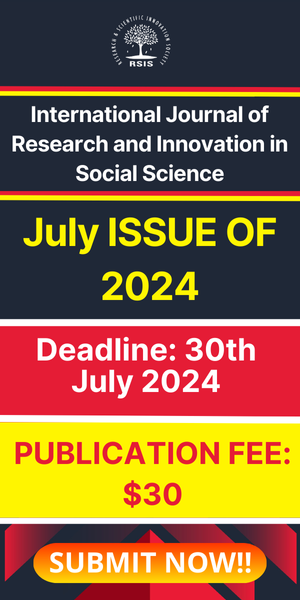Assessment of Public Knowledge on Performance of the 2004 Population Policy in the Federal Capital Territory (FCT), Nigeria
- March 15, 2019
- Posted by: RSIS
- Category: Geography
International Journal of Research and Innovation in Social Science (IJRISS) | Volume III, Issue II, February 2019 | ISSN 2454–6186
DOGO, D.M.*, Mundi, R. & Dakyes, P.S
Department of Geography, University of Abuja, Nigeria
*Corresponding Author
Abstract:-The abysmal performance of the 1988 and 2004 population policies has called to question population policy implementation in Nigeria. This study assessed public knowledge of the 2004 population policy in the Federal Capital Territory; identified socio-economic factors that influenced public knowledge of the policy and impact on policy performance. Questionnaire was administered on 1062 household heads to generate required primary data. Findings revealed that although 88% of respondents were exposed to general information, only 49.7% had knowledge of the existence of the policy. Out of this, only 37% had knowledge of policy goals, while 59% had knowledge of policy targets. Education, income and occupation significantly influenced public knowledge of the policy. The limited knowledge of the policy was largely responsible for the disconnection between the policy and people, which impacted negatively on its implementation. The study thus recommended a strategic communication plan for population policy that is people-centred, community-driven and broad-based to elicit wider stakeholders’ participation during the formulation and implementation of future population policy.
Key Words: Public Knowledge, Awareness, Population Policy, Implementation, Goals, Targets
I. INTRODUCTION
Nigeria’s population has grown rapidly over the years. With a population of 45.2 million in 1960, the population increased to an estimated 187.7 million in 2016 (United Nations, 2017). Nigeria’s population growth pattern shows that Nigeria had a population of 55.7 million in 1963 which thereafter increased to 79.8 million in 1973. The figure further increased to 88.5 million in 1991 and 140 million in 2006 (Afolayan, 1983; NPC, 1998; NPC, 2010). This phenomenal increase in population shows that in a period slightly over 50 years, Nigeria’s population had tripled.


